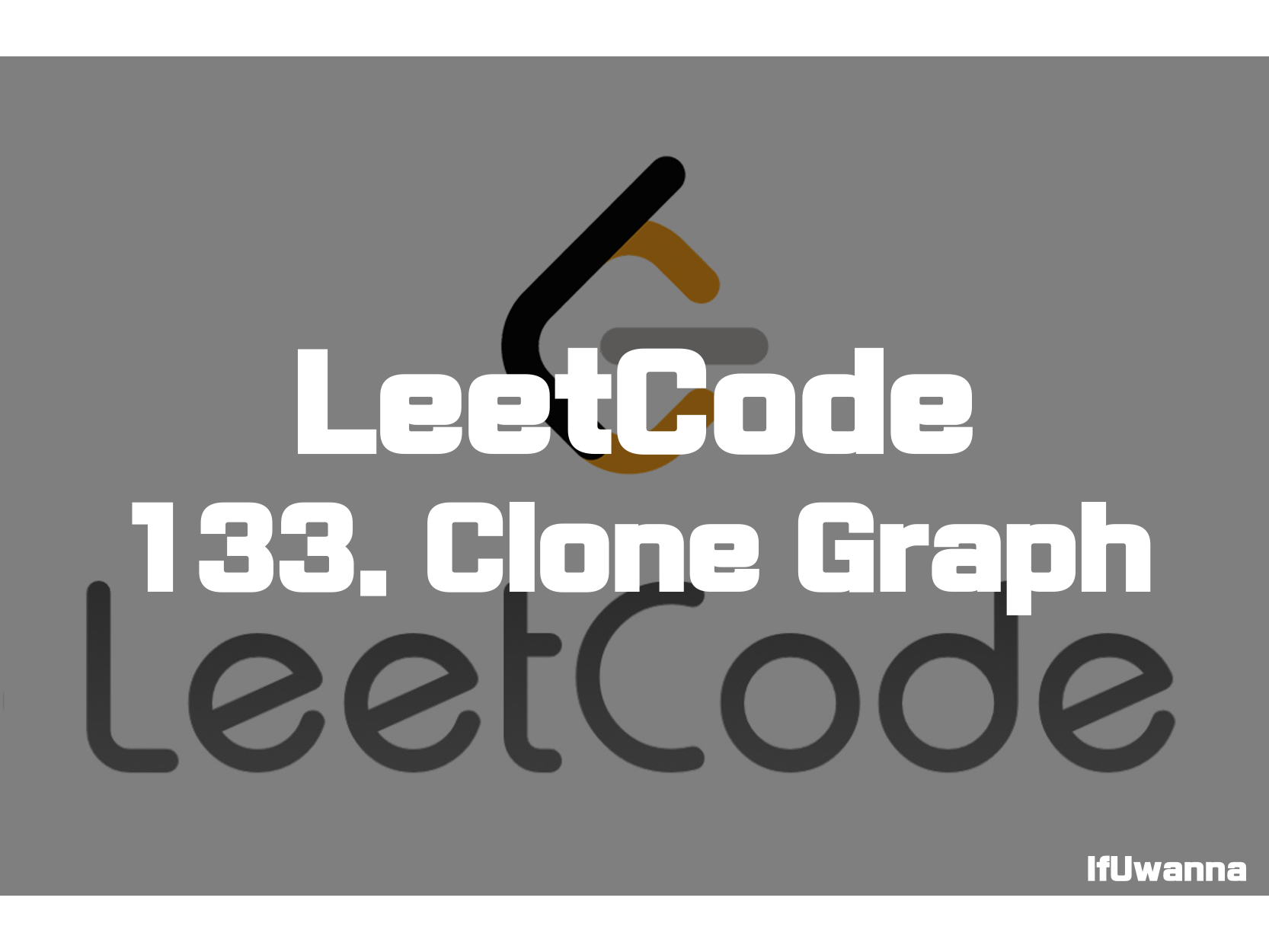
Description
연결된 무방향 그래프에서 노드의 참조가 주어집니다. 그래프의 전체 복사본(클론)을 반환합니다.
그래프의 각 노드에는 인접 노드의 값(int)과 목록(List[Node])이 포함됩니다.
Given a reference of a node in a connected undirected graph.
Return a deep copy (clone) of the graph.
Each node in the graph contains a value (int) and a list (List[Node]) of its neighbors.
class Node {
public int val;
public List<Node> neighbors;
}
Test case format:
For simplicity, each node's value is the same as the node's index (1-indexed). For example, the first node with val == 1, the second node with val == 2, and so on. The graph is represented in the test case using an adjacency list.
An adjacency list is a collection of unordered lists used to represent a finite graph. Each list describes the set of neighbors of a node in the graph.
The given node will always be the first node with val = 1. You must return the copy of the given node as a reference to the cloned graph.
Example 1:

Input: adjList = [[2,4],[1,3],[2,4],[1,3]]
Output: [[2,4],[1,3],[2,4],[1,3]]
Explanation: There are 4 nodes in the graph.
1st node (val = 1)'s neighbors are 2nd node (val = 2) and 4th node (val = 4).
2nd node (val = 2)'s neighbors are 1st node (val = 1) and 3rd node (val = 3).
3rd node (val = 3)'s neighbors are 2nd node (val = 2) and 4th node (val = 4).
4th node (val = 4)'s neighbors are 1st node (val = 1) and 3rd node (val = 3).
Example 2:

Input: adjList = [[]]
Output: [[]]
Explanation: Note that the input contains one empty list. The graph consists of only one node with val = 1 and it does not have any neighbors.
Example 3:
Input: adjList = []
Output: []
Explanation: This an empty graph, it does not have any nodes.
Constraints:
- The number of nodes in the graph is in the range [0, 100].
- 1 <= Node.val <= 100
- Node.val is unique for each node.
- There are no repeated edges and no self-loops in the graph.
- The Graph is connected and all nodes can be visited starting from the given node.
public class UndirectedGraphNode {
public int val;
public List<UndirectedGraphNode> neighbors;
public UndirectedGraphNode() {
val = 0;
neighbors = new ArrayList<UndirectedGraphNode>();
}
public UndirectedGraphNode(int _val) {
val = _val;
neighbors = new ArrayList<UndirectedGraphNode>();
}
public UndirectedGraphNode(int _val, ArrayList<UndirectedGraphNode> _neighbors) {
val = _val;
neighbors = _neighbors;
}
}
Solution 1. BFS
public UndirectedGraphNode cloneGraph(UndirectedGraphNode node) {
if(node == null) return null;
Map<UndirectedGraphNode, UndirectedGraphNode> map = new HashMap<>();
map.put(node, new UndirectedGraphNode(node.val));
Queue<UndirectedGraphNode> q = new LinkedList<>();
q.offer(node);
while(!q.isEmpty()){
UndirectedGraphNode cur = q.poll();
for(UndirectedGraphNode neighbor : cur.neighbors){
if(!map.containsKey(neighbor)){
map.put(neighbor, new UndirectedGraphNode(neighbor.val));
q.offer(neighbor);
}
map.get(cur).neighbors.add(map.get(neighbor));
}
}
return map.get(node);
}
너비우선탐색(BFS)를 통해 방문하지 않았던 인접노드들을 방문하며 새로운 노드들을 생성합니다.
Reference
Clone Graph - LeetCode
Level up your coding skills and quickly land a job. This is the best place to expand your knowledge and get prepared for your next interview.
leetcode.com
'알고리즘 > LeetCode' 카테고리의 다른 글
| [LeetCode] 165. Compare Version Numbers - 문제풀이 (0) | 2022.02.25 |
|---|---|
| [LeetCode] 148. Sort List - 문제풀이 (0) | 2022.02.24 |
| [LeetCode] 171. Excel Sheet Column Number - 문제풀이 (0) | 2022.02.22 |
| [LeetCode] 169. Majority Element - 문제풀이 (0) | 2022.02.21 |
| [LeetCode] 1288. Remove Covered Intervals - 문제풀이 (0) | 2022.02.20 |
